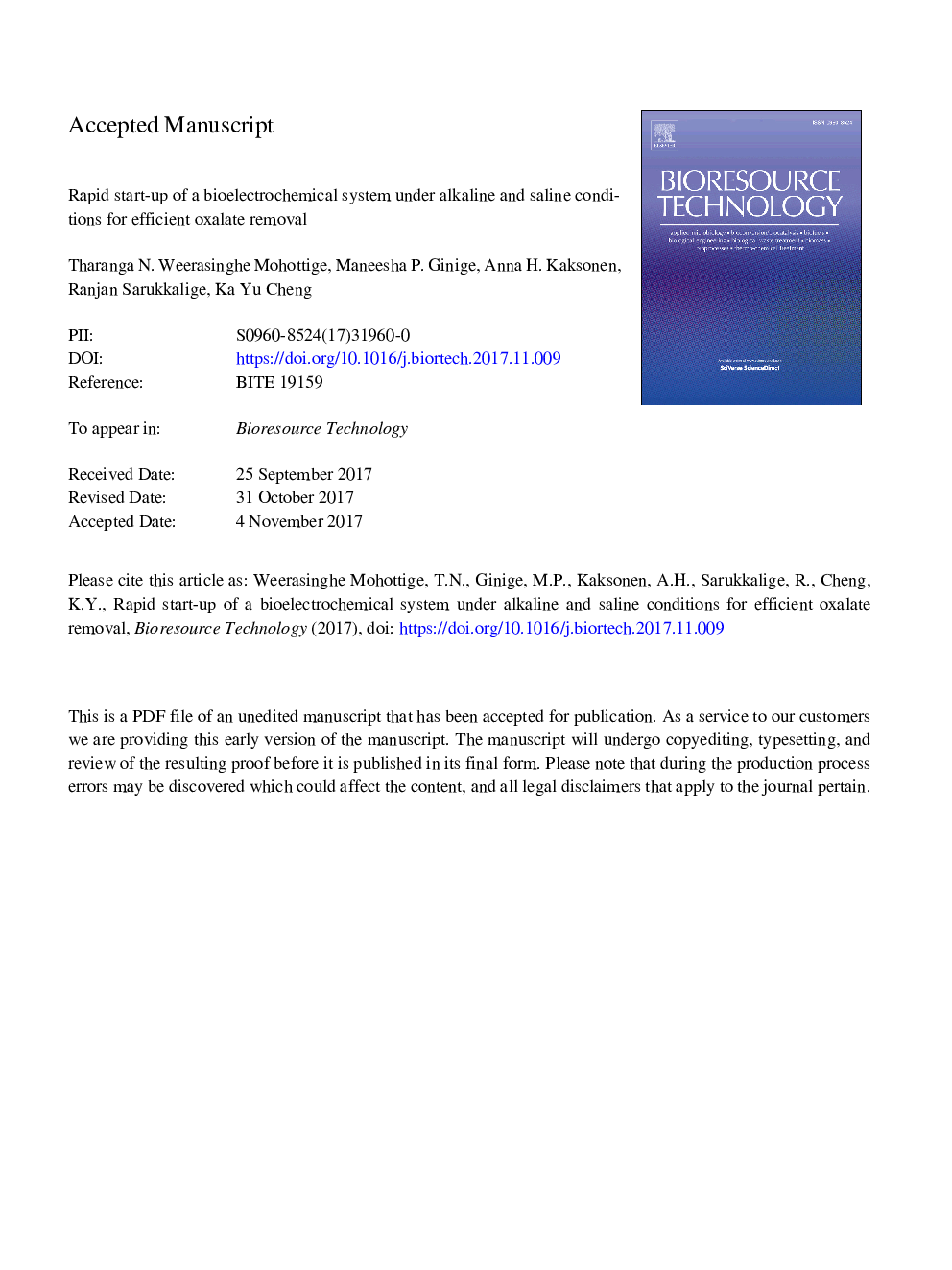| Article ID | Journal | Published Year | Pages | File Type |
|---|---|---|---|---|
| 7068716 | Bioresource Technology | 2018 | 41 Pages |
Abstract
This study examined a new approach for starting up a bioelectrochemical system (BES) for oxalate removal from an alkaline (pHâ¯>â¯12) and saline (NaClâ¯25â¯g/L) liquor. An oxalotrophic biofilm pre-grown aerobically onto granular graphite carriers was used directly as both the microbial inoculum and the BES anode. At anode potential ofâ¯+200â¯mV (Ag/AgCl) the biofilm readily switched from using oxygen to graphite as sole electron acceptor for oxalate oxidation. BES performance was characterised at various hydraulic retention times (HRTs, 3-24â¯h), anode potentials (â600 toâ¯+200â¯mV vs. Ag/AgCl) and influent oxalate (25â¯mM) to acetate (0-30â¯mM) ratios. Maximum current density recorded was 363â¯A/m3 at 3â¯h HRT with a high coulombic efficiency (CE) of 70%. The biofilm could concurrently degrade acetate and oxalate (CE 80%) without apparent preference towards acetate. Pyro-sequencing analysis revealed that known oxalate degraders Oxalobacteraceae became abundant signifying their role in this novel bioprocess.
Related Topics
Physical Sciences and Engineering
Chemical Engineering
Process Chemistry and Technology
Authors
Tharanga N. Weerasinghe Mohottige, Maneesha P. Ginige, Anna H. Kaksonen, Ranjan Sarukkalige, Ka Yu Cheng,
